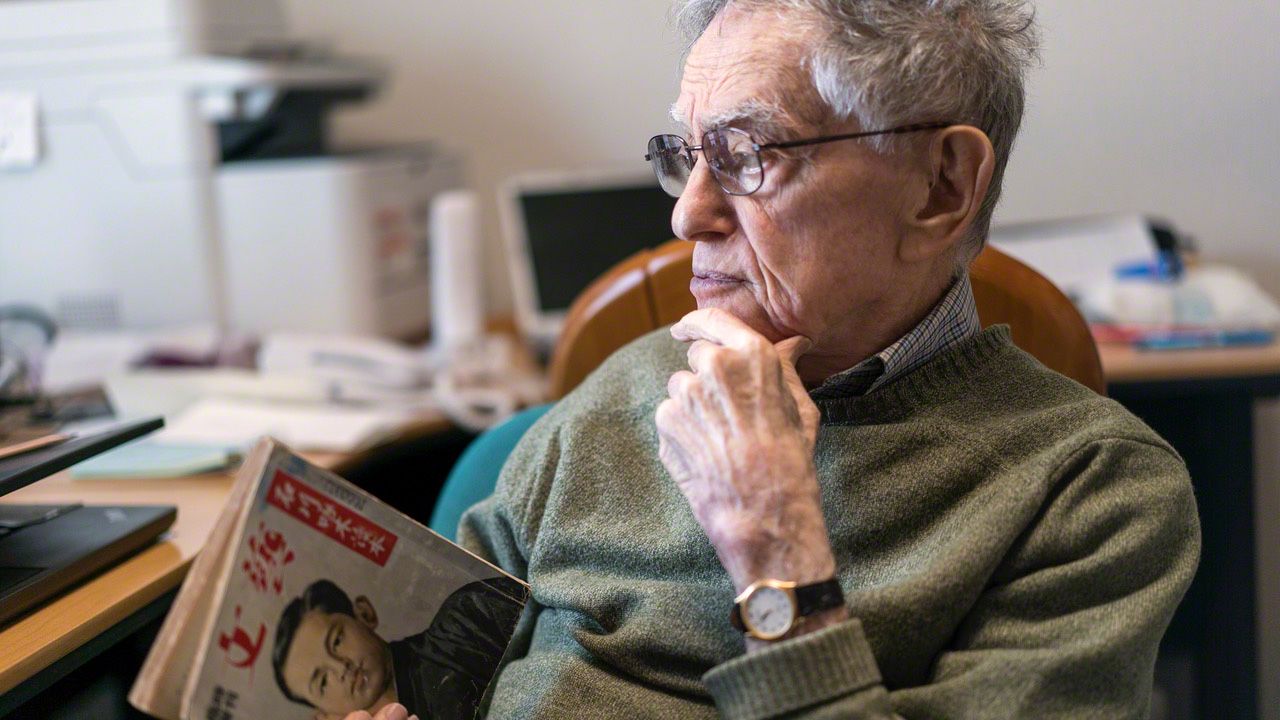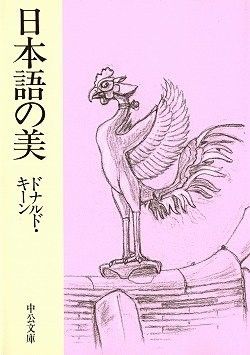
“The Beauties of Japanese”: A New Side of Donald Keene
Culture Books- English
- 日本語
- 简体字
- 繁體字
- Français
- Español
- العربية
- Русский
Known and Admired
Outside Japan, Donald Keene (1922–2019) achieved international esteem as one of the leading translators, interpreters, and scholars of Japan in modern times, but he was even more widely known and admired in Japan. All his most important books, including his magisterial multivolume History of Japanese Literature, were published in Japanese translation (some even before their English counterparts) and garnered an array of prestigious prizes. He was also tapped for contributions to Japan’s leading literary magazines. Even in his Tokyo neighborhood, out to do his shopping at the local stores, he was often stopped by older people who simply wanted to shake his hand. (This, he told me, delighted him.) Eventually Keene acquired a kind of celebrity charisma that made his acquisition of Japanese citizenship in old age the stuff of newspaper headlines.
Japanese readers were not only interested in Keene’s knowledge about Japan: They also wanted to know his personal opinions, the story of his life, what made him tick. This led to several books written specifically for the Japanese audience, including Nihongo no bi (The Beauties of Japanese), published by Chūō Kōron in 2000.
The way The Beauties of Japanese came into being is a story of its own. When Keene was 62 years old, the monthly journal Chūō Kōron asked him to write a series of short personal essays to open each issue for two years, from January 1985 to December 1986. Keene decided to discuss the distinctive qualities of the Japanese language and to compose the essays in Japanese rather than having them translated from English, as had been his custom for longer works. The decision was a natural one, for by that time he could assert with understandable pride “Japanese is not a foreign language to me” (私にとって日本語は外国語ではない。). These essays were later combined with others that he had written in Japanese during the 1980s and early 1990s, giving birth to The Beauties of Japanese.
Escapist Impulses
The book is divided into three parts. The first comprises the twenty-four short essays described above, a bazaar of little-known facts and pungent observations about the Japanese language. The essays of the second part (which, it should be said, sometimes overlap with his writings in English) revolve around his friendships with various renowned artists, scholars, and intellectuals, such as Abe Kōbō, Mishima Yukio, Edwin Reischauer, Shiba Ryōtarō, and the pianist Nakamura Hiroko, as well as reflections on Ishikawa Takuboku and Tokuda Shūsei, writers of an earlier age, and the scholar Tsunoda Ryūsaku, who he called “my teacher.” (Full disclosure: Last year, I was asked to translate three essays from the second part into English, an endeavor to which I owe my discovery of the book.) The third section comprises essays about Keene’s own life and thoughts, including a long account of his journey to the Silk Road.
I have read most everything that Keene wrote about himself in English, but there are things in this section that I did not know about him before. Two essays in particular stand out: “Escape as a Way of Life” and “Thoughts on Death.”
“Escape as a Way of Life” traces the desire to escape, rooted in childhood loneliness, as the leitmotif of his entire life. Here is my translation of the opening section of the essay:
As a child I must have been filled with dreams, but today I only remember one, the dream of escape. Throughout my school years, from elementary school to high school, I was always the shortest child in my grade. Small as I was, I’m sure that had I consciously exerted myself I could have made a respectable showing at sport meets and so on, but I was used to sailing through academics with no effort and the idea of exerting myself in athletics in order to win my classmates’ respect never occurred to me. My one and only thought was that if they did not recognize the true value hidden within my spindly little frame, then I would rather escape to a different world, one where I would be properly understood.
The movies presented the simplest way to escape. Since I usually didn’t have any money, I couldn’t drop in any time the urge took me, but I managed to go at least every Saturday. There was also a movie studio not far from my house in Brooklyn and now and then I would hang around the entrance. Somehow I imagined that a producer or director would come out and see me and exclaim, “You’re just the kid that we’ve been looking for to play that part!” Unfortunately, no matter how often I presented myself, I remained unnoticed. No one even said, in the parlance of those days, “Beat it, kid!”
Another method of escape that I had was to pore over a map of the world in search of a place where I might live happily ever after. I collected stamps in those days, so I was familiar with the scenery of many countries and the faces of many famous people. Attracted by its scenery, climate, and its distance from other islands, I settled on Réunion Island, a French territory in the Indian Ocean, as my imagined refuge.
I gave no thought to how I would support myself in Réunion once I managed my escape. I suppose I envisioned myself happily passing the time in admiring the myriad waterfalls I had seen so often on my stamps and visiting the post office to buy new stamp issues. It was the act of escape itself that mattered, not the afterwards, so material things like how to make a living were brushed aside.
By the time I finally arrived in Réunion, it was 1963 and I was 41 years old. I had long since given up my escapist dreams but at night as I strolled through the dark and lampless streets of the town, I found myself wondering what kind of person I might have become had my childhood dream come true. The next morning, following the hotel clerk’s recommendations, I set off for the most beautiful places on the island. There were indeed many waterfalls. I also went to the cemetery of Hell-Bourg, a charming mountain village. As I wandered among the tombstones reading the inscriptions, some from two-hundred-odd years ago, I could not help wondering if the French people buried there had found happiness in their place of refuge.
Keene goes on to explore the escapist impulses that led him to study Chinese and then Japanese, and that governed him even when he served as a soldier in World War II. Then, after enumerating all the disadvantages of being an escapist, he declares that the greatest joy of his life is that his escapism led him, paradoxically, to the work that truly fulfills him. Given the audience he is writing for, there is no need to spell out what this work is, but it is of course his career as an interpreter of Japan and Japanese literature.
Before I read “Escapism as a Way of Life,” I had always thought that Keene’s passion for Japan and Japanese literature had begun in college, when he first encountered The Tale of Genji, which he wrote about often in English. I had never thought to connect his childhood loneliness and desire to escape to the impulses that made him so receptive to Japanese.
After I Die
“Thoughts on Death” is an extraordinary compilation of vignettes, almost a stream of consciousness meditation on the various guises in which he has encountered death in others. Midway, he suddenly stops and, turning to himself, asks,
What do I want to become after I die? I must confess, strange as it seems, that I have never pictured my own death. For a young person that would be natural, but even now, at 67 years of age, I don’t have a strong sense of my own death as arriving in some not-too-distant future.
Having declared that he has never envisioned his own death, Keene, as if the negative affirms its own opposite, then goes on to do exactly that. Writing the essay seems to have made him begin to think about himself in new ways. In the last lines he playfully considers where he might like to be buried, and the items he wants to have interred with him. Perhaps, he muses, some books and a few of his favorite ceramics (he was a great collector) would be good. But then, after running through various scenarios, the argument takes a sudden turn again and he declares,
I don’t really need a grave at all. If there is someone kind enough to remember me, anything will do. It’s as Shunzei said in his poem long ago:
Who will remember anew among
the wild orange blossoms
who will remember
and yearn?
When I too belong to the past....
It is as if Keene allows himself to be taken gently by the hand and led to think, through the poem, about life after death. Perhaps the beautiful poem by Fujiwara Shunzei (1114–1204), appearing in the 1205 collection Shin kokinshū, gave him courage.
The Beauties of Japanese has many fascinating essays but for me, interested as I am in Keene’s private emotional world, “Escape as a Way of Life” and “Thoughts on Death” stand out. Taken together, they show how the boy from Brooklyn who loved the movies grew into the scholar and translator who felt at home in two languages, two cultures, and two countries.
Nihongo no bi (The Beauties of Japanese)
By Donald Keene
Published by Chūō Kōron in 2000
ISBN: 978-4122035720
(Originally written in English. All translations © Janine Beichman. Banner photo: Donald Keene holds a book introducing the poet Ishikawa Takuboku in his study in Tokyo on March 29, 2016. © Miyazawa Masaaki.)


